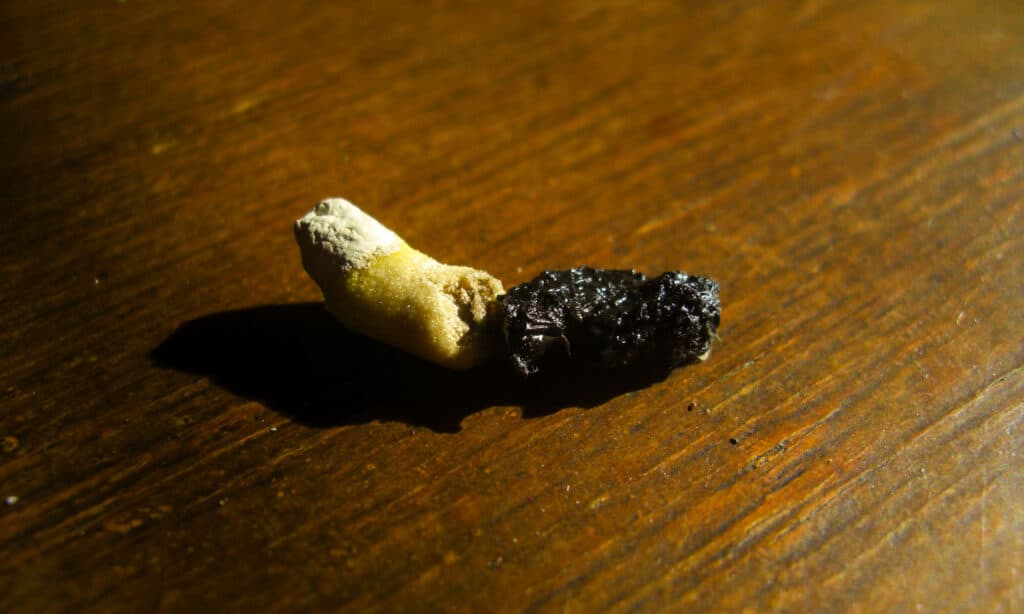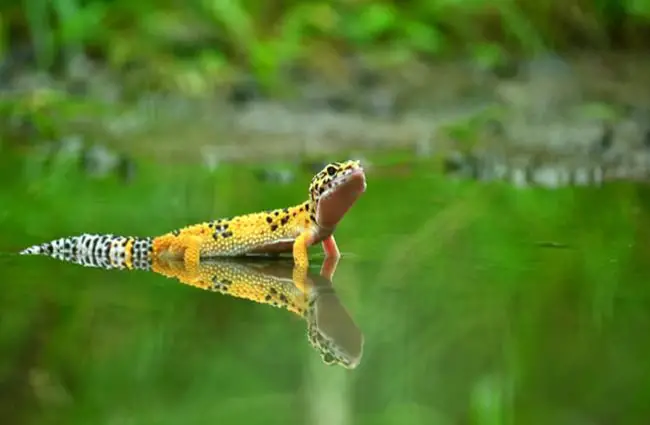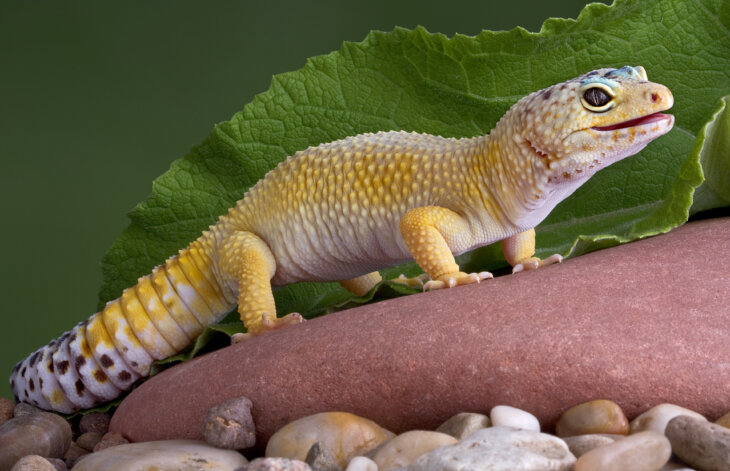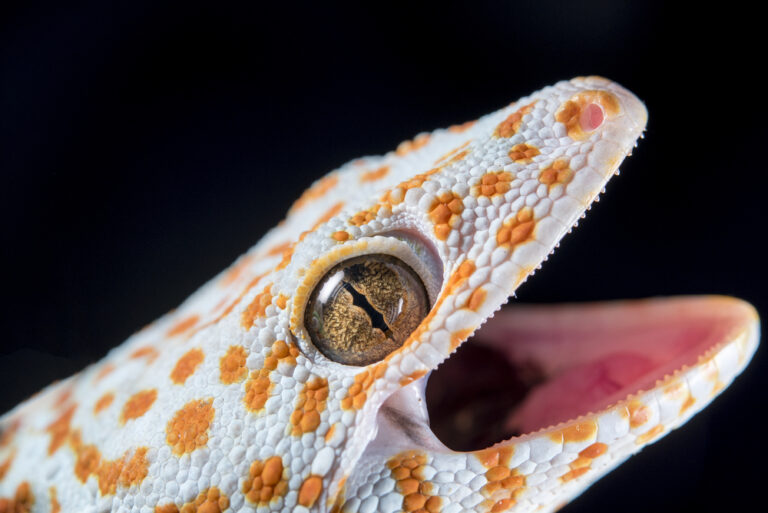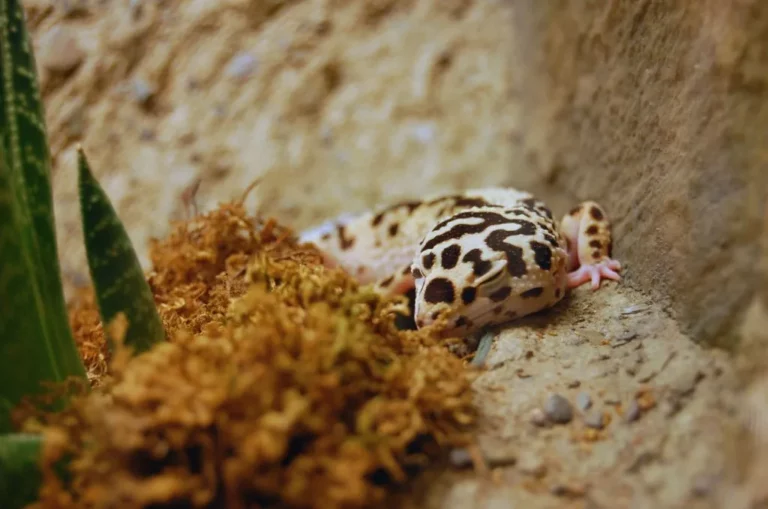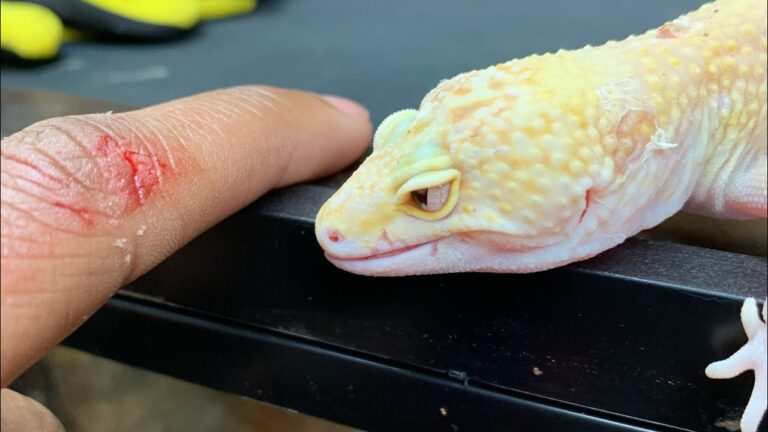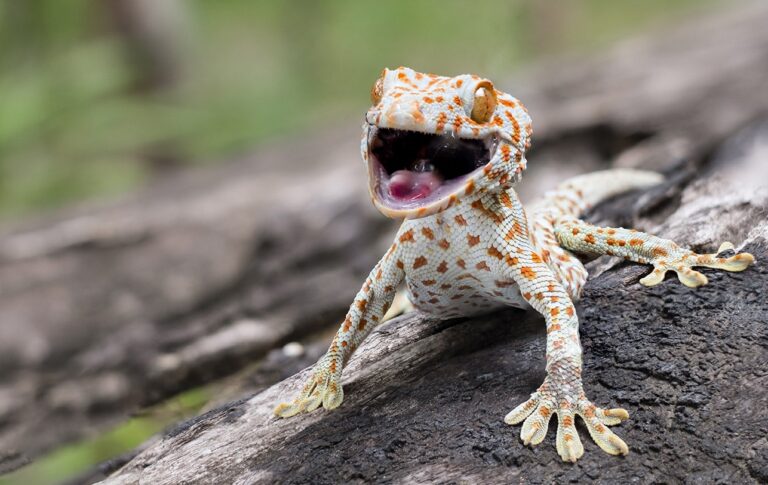What Does Leopard Gecko Poop Look Like?
As a passionate reptile enthusiast, I vividly remember the day I brought home my very first leopard gecko, Rex. With his striking spotted appearance and captivating eyes, he quickly became the star of my small reptile haven. However, amidst the excitement of setting up his terrarium and providing the perfect hideaways, one question loomed in my mind – what does leopard gecko poop look like?
Their poop looks like a small, solid, brown cylinder, about half an inch long. It should be firm, not runny or liquid. This is a sign that your gecko is healthy.
So, if you’re a fellow gecko enthusiast or a curious soul eager to learn about this fascinating reptile, join me as we explore the often-overlooked realm of scatological signals in the lives of these captivating creatures
Poop chart:
| Poop Concerns | Possible Causes | Meaning |
| Not pooping | Lost appetite (related to other health issues), dehydration, incorrect tank temperature, impaction. | Indicates potential health or digestive problems. |
| Undigested insects in feces | Overdose of vitamins, inadequate tank or basking temperatures, parasites, impaction. | Suggests issues with digestion or temperature regulation. |
| Whitish poop | Feeding on shed skin or ingestion of loose substrate. | Often benign, can result from harmless habits. |
| Green poop | Possible ingestion of substrate (e.g., dyed sand, moss), bacterial or parasitic infection (less likely). | May indicate dietary or minor infection issues. |
| Yellow color | Overdose of minerals, particularly excess calcium, dehydration, and parasites. | This can signify dietary or hydration problems. |
| Grey color | Feeding on shed skin, ingestion of loose substrate. | Commonly harmless, linked to shedding or substrate consumption. |
| Watery or smeared stool | Diarrhea is caused by worms, parasites, stress, or viral infections, and unsanitary enclosure. | Indicates gastrointestinal or environmental issues. |
| Worms | Possible parasitic infection, presence of fly maggots, mites. | Signals the presence of parasites or external pests. |
| Soft | Alterations in diet or Cryptosporidium | If your leopard gecko’s excrement persists in being soft, gradually introduce a new diet and consult your veterinarian. An untreatable parasite called Cryptosporidium causes loose stools, weight loss, and regurgitation. Only a PCR test can identify it, and infected lizards should be put to death. |
How Does The Leopard Gecko Poop?
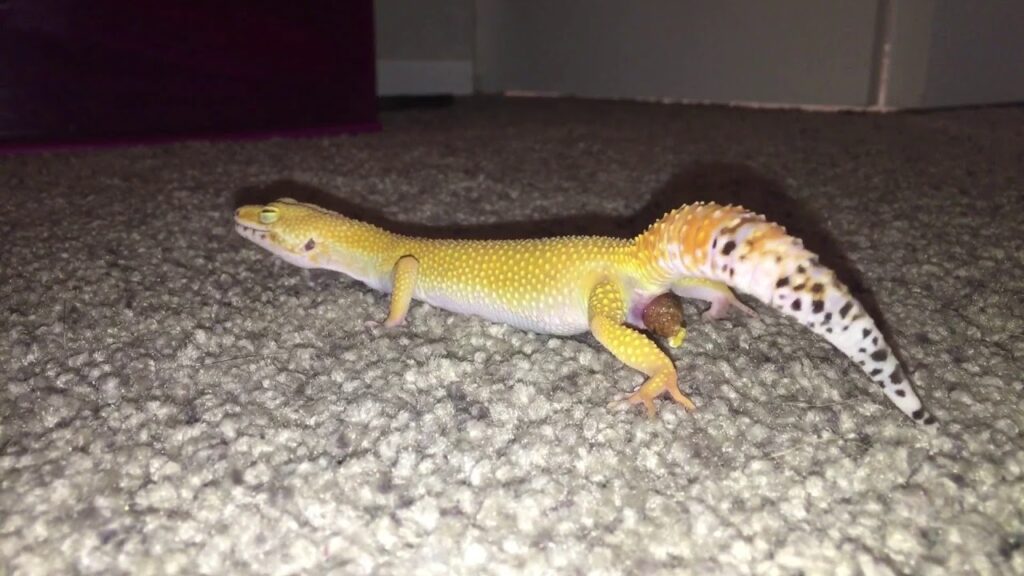
Leopard Geckos have a rather fascinating digestive system, which is worth delving into. Their journey of digestion begins with the mouth, followed by the stomach, intestines, and ultimately, their unique vent system.
The initial step occurs in the mouth, where they chew their food before it embarks on a journey through their digestive tract. This masticated sustenance then travels through the pharynx and esophagus, making its way into the stomach.
Inside the stomach, the food undergoes crucial processing, setting the stage for final digestion. The remnants of this process continue their voyage through the small and large intestines, extracting essential nutrients along the way.
Now, here’s where geckos truly stand out. Their vent, a multifunctional chamber, consists of three distinct areas:
Coprodeum: This is where solid waste products find their temporary abode. It serves as a repository for undigested residues, awaiting elimination.
Urodeum: This compartment is a bit more versatile. It houses not only urine but also the precious cargo of eggs or sperm. The urodeum acts as a crucial junction for reproductive and waste processes.
Proctodeum: This marks the final frontier of the gecko’s digestive journey. It’s the point where various elements, including the feces and urates, culminate before exiting through the cloaca
Where do leopard geckos poop?
Much like we have designated restrooms, your leopard gecko tends to establish a preferred spot within their enclosure for their bathroom needs. Typically, this chosen location is a corner of their tank.
Moreover, when arranging your gecko’s habitat, it’s a practical strategy to leave one corner uncluttered. This approach encourages your gecko to utilize that specific spot for their toilet activities.
This arrangement offers several advantages. Firstly, it simplifies cleanup, as you usually know where to locate their waste. Secondly, it facilitates monitoring their bathroom habits, allowing you to gauge how frequently they relieve themselves in relation to their eating patterns.
Why Is My Leopard Gecko’s Poop Watery?
Detecting diarrhea in your leopard gecko is essential for their well-being. When you observe a runny, watery, or overly squishy stool, combined with frequent pooping and the presence of undigested insects in their feces, it’s a cause for concern.
Keep an eye out for these six signs that may indicate leopard gecko diarrhea:
Loose Watery-Like Feces: Abnormal feces consistency, such as being watery instead of solid.
Frequent Passing: An increase in the frequency of bowel movements.
Foul-Smelling Poop: Noticeably unpleasant odor from their stool.
Noticeable Fatigue: If your gecko appears lethargic or less active than usual.
Sudden Loss of Appetite: A sudden disinterest in eating.
Dehydration: Signs like sunken eyes or wrinkled skin, indicate insufficient fluid intake.
Furthermore, preventing diarrhea through good gecko husbandry is the primary strategy. However, if you suspect your gecko has diarrhea, it’s crucial to act promptly. Take your pet and a sample of its feces to your local vet as soon as possible. They can address dehydration and initiate appropriate treatments, which may include systemic medications.
Also, When collecting a poop sample, place it in a small plastic container or a Ziploc bag. If you can’t reach the vet immediately, refrigerate (but do not freeze) the sample to preserve its integrity.
Why Is My Leopard Gecko Eating Its Poop?
While the idea of eating feces is undoubtedly repulsive to us humans, it’s essential to recognize that many animals engage in this instinctual behavior.
Leopard geckos, however, are not typical coprophagous (poop-eating) creatures. If you happen to observe your Leo eating feces, it’s most likely accidental, though there could be other underlying reasons.
When geckos develop a habit of coprophagia, two main factors may be at play:
Hunger: Ensure your gecko is receiving an adequate amount of food appropriate for its age and size.
Nutrition: Sometimes, it’s not a lack of food but a deficiency in essential nutrients. In such cases, reevaluating their diet and making necessary adjustments is crucial.
It’s crucial to understand the potential risks associated with coprophagia. Fecal matter is not harmless; it can contain intestinal parasites and various pathogens, such as Salmonella and Staphylococcus. If your Leo regularly engages in coprophagia, it not only poses a health risk to them but also increases your own risk of exposure to these pathogens or parasites.
Poop frequency:
| Age | Weight | Length (Snout to Vent) | Poop Frequency |
| Hatchling | 0.07–0.17 oz. (2–5g) | 3″–4″ (7.62–10.16 cm) | 1–5 times/day |
| 1 month | 0.5–0.7 oz. (15-20g) | 4″ (10.16 cm) | 1–3+ times |
| 2 months | 0.6–1.05 oz. (18-30g) | 5″ (12.7 cm) | 1+ times |
| 6–18 months | 0.8–2.1 oz. (25-60g) | 3″–6″ (12.7–15.24 cm) | Once per day |
| 18+ months | 1.41–2.8 oz. (40-80g) | 8″–11″ (20.3–28 cm) | Every 2–3+ days |
FAQs
Do Leopard Geckos Poop During Brumation?
No, Leopard geckos typically do not poop during brumation, as their metabolic rate slows down significantly during this period.
How Long Can A Leopard Gecko Go Without Pooping?
Leopard geckos can go without pooping for several weeks to a few months, depending on factors like temperature, age, and activity level.
Why is my Leopard Gecko’s Poop So Big?
Larger-than-usual gecko poop can result from occasional constipation, overeating, or a change in their diet. Consult a veterinarian if it persists.
How Do I Get a Leopard Gecko to Poop?
Ensure proper temperature and humidity levels in their enclosure, provide a balanced diet, and give them access to a warm bath to help stimulate digestion.
Do Leopard Geckos Eat Their Poop?
No, Leopard geckos do not typically eat their own poop. If you notice this behavior, it might indicate a dietary or health issue that should be addressed.
Final words
In my observation, healthy leopard gecko poop presents itself as a solid, brown cylinder, typically measuring around half an inch in length. It maintains a firm texture, and importantly, it should not appear runny or liquid.
Also, this visual standard serves as a practical and essential reference point for assessing the well-being and digestive health of these remarkable reptiles. Keeping a watchful eye on their feces is a fundamental aspect of ensuring their proper care and nutrition.

